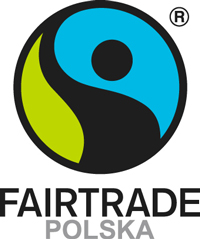Przypisy (rozdział 7 - 8)
Rozdział 7. Bezpieczeństwo żywnościowe
Cytat na wstępie - Richard Douthwaite, Short Circuit: Strengthening Local Economies for Security in an Unstable World, Green Books, Dartington 1996, s. 271.
1. Trzy największe firmy pakujące wołowinę to Tyson, ConAgra i Excel (filia Cargill). Cztery największe firmy produkujące płatki kukurydziane to Kellogs, General Milks, Philip Morris oraz Quaker Oats. Firmy, które zdominowały handel zbożem to Cargill i Archer Daniels Midland. Update View of the Meatpacking Industry, REAP „News and Views”, 31.7.2001, www.reap.org; A. V. Krebs, „Agribusiness Examiner”, nr 19, 28.1.1999; A. V. Krebs, It is Plain, Cargill’s Reign in the Grain Has Become Profane, „Agribusiness Examiner”, nr 9, 12.11.1998. [powrót do tekstu]
2. Pięć najważniejszych firm na rynku pestycydów i transgenicznych nasion to AstraZeneca, DuPont, Monsanto, Novartis, i Aventis. Rural Advancement Foundation International, www.rafi.org, 16.3.2000; i „Agrow”, nr 335, 27.8.1999. [powrót do tekstu]
3. AgBiotech's Five Jumbo Gene Giants, Rural Advancement Foundation International, www.rafi.org, 16.3.2000. [powrót do tekstu]
4. W: J. Flint, Agricultural Industry Giant Moving Towards Genetic Monopolism, „Telepolis Magazin der Netzcultur”, 28.6.1998, www.ix.de/tp/english/inhalt/co/2385/1.html. [powrót do tekstu]
5. US Gene „Theft”� Threatens Thai rice Industry, „The Ecologist” 31: 10, grudzień 2001/styczeń 2002. [powrót do tekstu]
6. Monsanto Claims Soy Gene Patent, „The Ecologist” 31: 10, grudzień 2001/styczeń 2002; Vandana Shiva, World in a Grain of Rice, „The Ecologist” 30: 9, grudzień 2000/styczeń 2001. [powrót do tekstu]
7. Leora Broydo, The Trouble with Percy, „Mother Jones”, 13.12.2000. [powrót do tekstu]
8. Communiqué, Rural Advancement Foundation International, marzec/kwiecień 1998; Ricarda A. Steinbrecher i Pat Roy Mooney, Terminator Technology: The Threat to World Food Security, „The Ecologist” 28: 5, wrzesień/październik 1998. [powrót do tekstu]
9. Brewster Kneen, Farmaggedon: Food and the Culture of Biotechnology, New Society Publishers, Gabriola Island 1999, s. 28. [powrót do tekstu]
10. The State of Food Security in the World, 1999, Food and Agriculture Organization, Rzym 1999. [powrót do tekstu]
11. UN Human Development Report, w: UN: Gap between Rich, Poor Grows, „New York Times”, 9.9.1998. [powrót do tekstu]
12. Joseph Dalaker, Poverty in the United States, 1998, US Census Bureau, Current Population Reports, Series P60-207, US Government Printing Office, Waszyngton 1999. [powrót do tekstu]
13. Vandana Shiva, Mustard or Soya? The Future of India’s Edible Oil Culture, Navdanya, New Delhi 1998. [powrót do tekstu]
14. To ironia, że podczas, gdy wielu mieszkańców Południa porzuca pełnowartościową żywność, uznając ją za jedzenie dla biedaków, coraz więcej ludzi na drugiej półkuli zmierza w odwrotnym kierunku, często płacąc więcej za produkty takie jak chleb razowy i brązowy ryż. [powrót do tekstu]
15. To dotyczy również innych rodzajów zywności. Na przykład mieszkańcy Indonezji, która jest producentem jednej z najlepszych na świecie kaw, piją kawę Nescafe, ponieważ jest to postrzegane jako modne, a większość krajowej kawy jest eksportowana na Północ, gdzie jej jedna filiżanka osiąga cenę będącą odpowiednikiem całodniowej indonezyjskiej pensji. [powrót do tekstu]
16. State of the World's Plant Genetic Resources, Food and Agriculture Organization, Rzym 1996. [powrót do tekstu]
17. Jack Doyle, Altered Harvest, Viking, Nowy Jork 1985. [powrót do tekstu]
18. David Pimentel i in., Environmental and Economic Benefits of Biodiversity, nieopublikowany manuskrypt, 12.4.1996, s. 3, w: Hope Shand, Human Nature: Agricultural Biodiversity and Farm Based Food Security, Rural Advancement Foundation International, Ottawa 1997. [powrót do tekstu]
19. Himanshu Thakkar, Performance of Large Dams in India: The Case of Irrigation and Flood Control, w: Large Dams and their Alternatives, dossier z konferencji: South Asia Consultation, Colombo, Sri Lanka, 10 - 11.12.1998, zorganizowanej przez World Commission on Dams, South Asia Network on Dams, Rivers & People, Delhi 1998. [powrót do tekstu]
20. Peter Bunyard, A Hungrier World, „The Ecologist” 29: 2, marzec/kwiecień, 1999. [powrót do tekstu]
21. Peter Bunyard, How Global Warming Could Cause Northern Europe to Freeze, „The Ecologist” 29: 2, marzec/kwiecień 1999. [powrót do tekstu]
a. Informacje pochodzą ze strony firmy Cargill: www.cargill.com, 15.5.2000. [powrót do tekstu]
b. W: A. V. Krebs, „Agribusiness Examiner”, nr 57, 23.11.1999. [powrót do tekstu]
Rozdział 8. Zmiana kierunku
Cytat na wstępie - Michael H. Shuman, Going Local: Creating Self-Reliant Communities in a Global Age, The Free Press, Nowy York 1998, s. 6.
1. Jules Pretty, The Living Land: Agriculture, Food and Community Regeneration in Rural Europe, Earthscan, Londyn 1998. [powrót do tekstu]
2. Jules Pretty, Regenerating Agriculture: Policies and Practice for Sustainability and Self Reliance, Earthscan, Londyn 1995. [powrót do tekstu]
3. Jules Pretty i in., An Assessment of the External Costs of UK Agriculture, Agricultural Systems, Londyn 1999. [powrót do tekstu]
4. Informacja prasowa McDonald's Corporation, McDonald's Report Global Results, 26.1.2000. [powrót do tekstu]
a. Peter Rosset, Alternative Agriculture Works: The Case of Cuba, „Monthly Review” 50: 3, lipiec/sierpień 1998. [powrót do tekstu]
b. Peter Rosset i Shea Cunningham, The Greening of Cuba, „Earth Island Journal” 10: 1, zima 1994/1995, s. 23. [powrót do tekstu]
c. Hugh Warwick, Cuba's Organic Revolution, „The Ecologist” 29: 8, grudzień 1999. [powrót do tekstu]
d. Catherine Murphy, Cultivating Havana: Urban Agriculture and Food Security in the Years of Crisis, Development Report nr 12, Institute for Food and Development Policy, Oakland 1999, s. 15. [powrót do tekstu]
e. Murphy, Development Report nr 12, s. 27 - 28. [powrót do tekstu]
f. Murphy, Development Report nr 12, s. 9. [powrót do tekstu]






 Wydawnictwo „Zielone Brygady” - dobre z natury. Niektóre prawa zastrzeżone.
Wydawnictwo „Zielone Brygady” - dobre z natury. Niektóre prawa zastrzeżone.